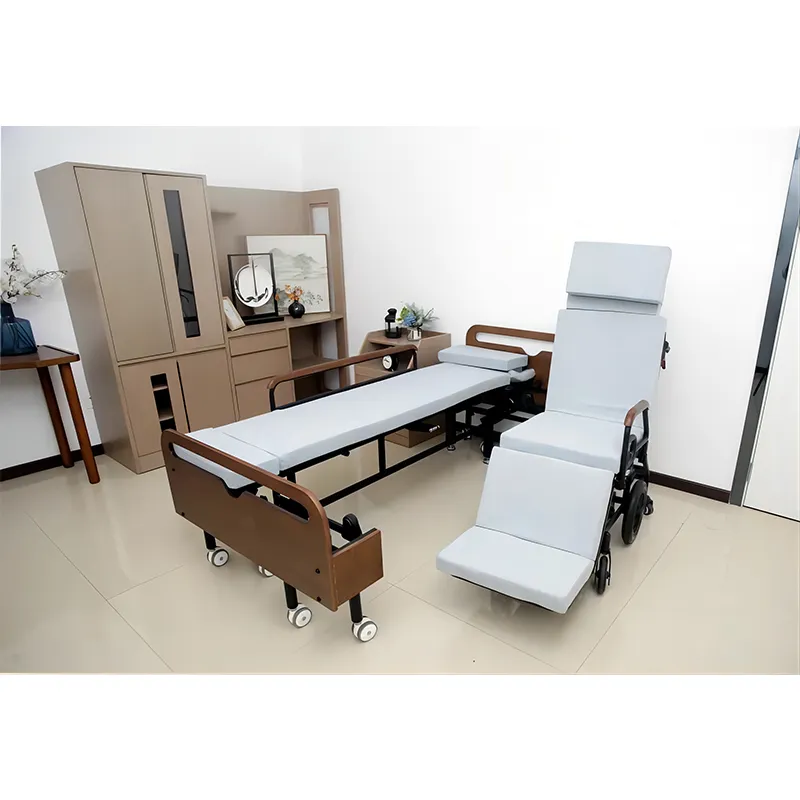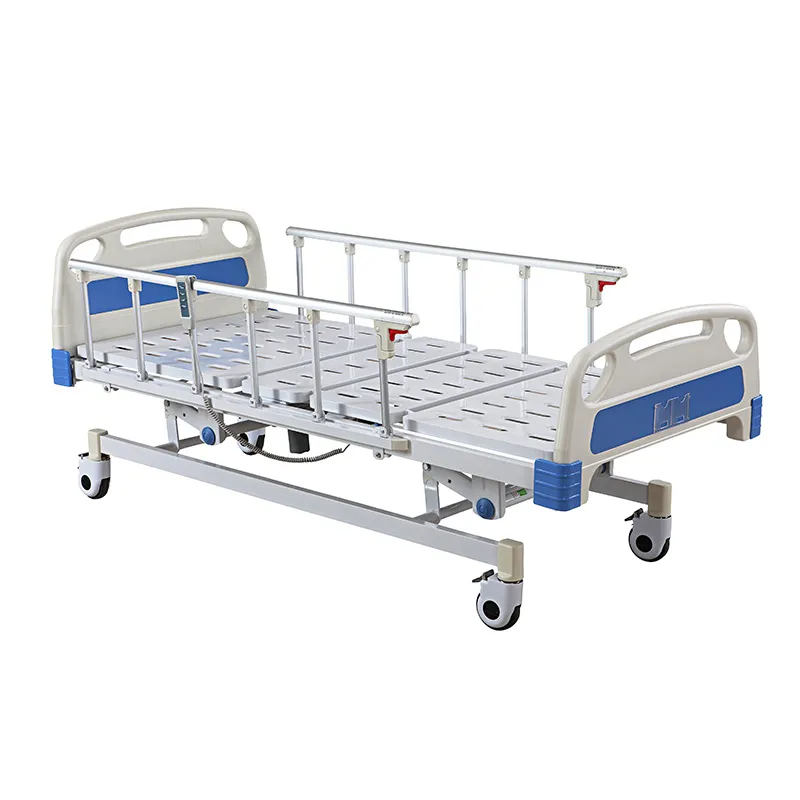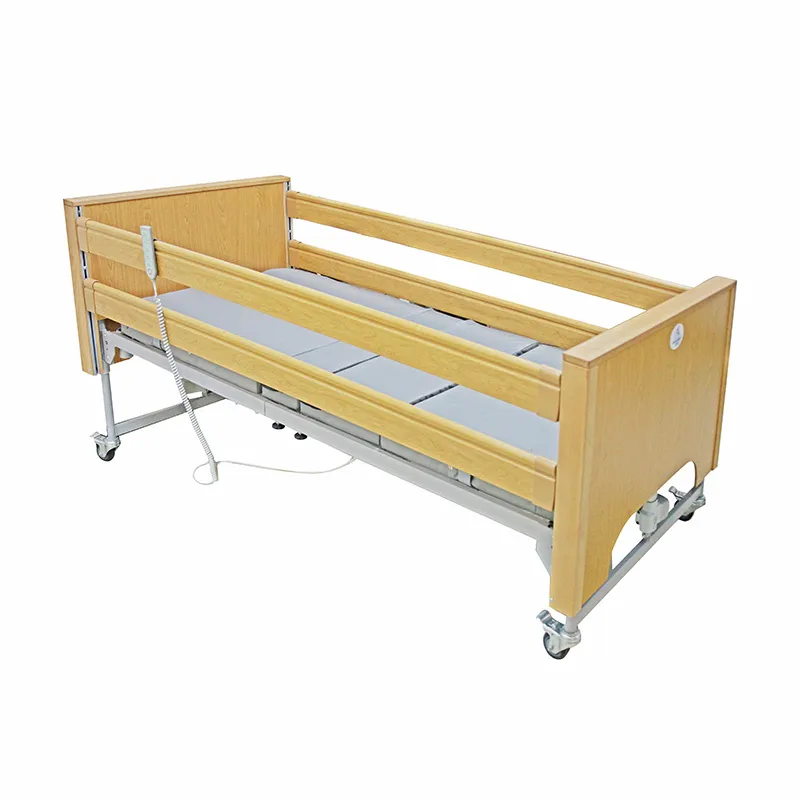
Can hospital beds be moved upstairs?
2024-10-04 15:30
Hospital beds are critical equipment for providing comfort, convenience, and support to patients, especially in long-term care. Using a hospital bed at home not only helps patients recover, but also provides convenience for caregivers. But the question is, if you need to move the bed to an upstairs bedroom, is it feasible? Let's explore this question in detail.

Why do you need to move a hospital bed upstairs?
Hospital beds are usually moved upstairs because the patient needs to rest in bed for a long time, and family members want them to be in a more comfortable, private environment close to the main living area. Upstairs bedrooms are usually quieter and have better privacy protection, especially for patients who need long-term care or rehabilitation. It is also crucial for the patient's mental health, so that they can go through difficult times in a familiar and safe environment.
In addition, for patients who have limited mobility, wheelchair users, or need assistance to move, placing a hospital bed in an upstairs bedroom can reduce the number of times they need to move around the house, reducing the possibility of accidents.
Can hospital beds be moved upstairs?
Although hospital beds are usually large and heavy, they can technically be moved upstairs. However, the difficulty of moving the bed depends on several factors, including the structure of the stairs, the size of the bed, the layout of the house, and the availability of moving tools.
One thing to consider is that hospital beds are usually made of metal and come with an electric lift, which makes the bed heavy. Standard hospital beds usually weigh between 100 and 200 kg, and although modern designs have some lightweight options, they still need to be handled with caution. In addition, the length, width and height of the bed also need to take into account the width of the stairs and the door frame of the room. If the door frame is too narrow, some components of the bed may need to be disassembled.
Can I ask a professional moving company to move the bed upstairs?
In most cases, moving a hospital bed upstairs is a very professional task, so it is a wise choice to ask a professional moving company to help. Professional moving companies have extensive experience and the necessary tools to safely and effectively move bulky and fragile equipment.
When choosing a moving company, it is important to make sure that they have experience handling hospital beds and other medical equipment. Since hospital beds contain complex components such as electric lifts, headboard adjustments, side guardrails, etc., non-professionals can easily cause damage during the moving process. Professional movers will carefully handle each component to ensure that the bed is not damaged during transportation.
Do they offer specialized services for moving sensitive equipment such as hospital beds?
Yes, many moving companies specialize in moving medical equipment. They not only have the necessary tools (such as lifts, sliding pads and ropes), but also can deal with various problems that may arise during the moving process. For example, they will assess the structure of the house in advance, measure the width of the stairs, the size of the corners, and the width of the door frames to ensure that the bed can be moved smoothly to the designated location.
Some companies even provide additional protection for the movement of such equipment, such as shockproof packaging and protective pads to avoid scratches or impact damage during the move. For special moving tasks, such as very narrow stairs or beds that need to be disassembled, they usually arrange technicians to assess them in advance.

How many movers do they send for each job?
Moving a hospital bed usually requires at least two to three workers, but the specific number will depend on the difficulty and complexity of the task. If the stairs are particularly steep or the corners are narrow, more workers may be needed to assist. These workers will have clear division of labor, some responsible for lifting and supporting the bed, some responsible for adjusting the direction and avoiding collisions.
If the bed needs to be disassembled or the door frame needs to be temporarily removed, technicians will also join the team to ensure that all components can be installed correctly after the move. In short, the moving company will decide the number of workers needed to be dispatched based on the on-site assessment to ensure that the bed can be safely and smoothly moved upstairs.
How do they plan, pack and move hospital beds?
Before moving a hospital bed, professional moving companies usually carry out detailed planning. They will first measure the size of the bed and the stairs and evaluate the transportation route within the house. If the bed size exceeds the width of the stairs or door frame, the technician may recommend partially disassembling the bed before moving it.
For packaging, workers will use special shock-proof packaging materials such as foam pads, protective covers and thickened plastic films to ensure that the bed will not be scratched or hit during transportation. During the actual transportation process, workers will use tools such as sliding pads and lifts to make the bed move smoothly and avoid damage to the stairs and floors.

Do they provide any insurance?
Many professional moving companies provide insurance for such tasks. Insurance usually covers damage to equipment, accidents during transportation, and personal injury. When choosing a moving company, it is very important to ask and understand the insurance details to ensure that customers will not incur additional costs in the event of an accident.
If the moving company does not provide insurance, customers can also consider purchasing temporary insurance as an additional protection measure. In short, ensuring that the bed is fully protected during transportation is an important link that cannot be ignored.
Are there any specific instructions for disassembling the bed for upstairs movement?
If the size of the bed cannot pass through the stairs or door frame, disassembly is the only option. The disassembly process usually involves separating the head, foot and main body of the bed, removing the electric lifting device and side guardrails, etc. Professional movers usually carry the necessary tools and know how to safely disassemble and reassemble the bed.
Before disassembly, workers usually take photos or record the original state of the bed to ensure that it can be fully restored when reassembled. In addition, they will mark the location and orientation of each component to ensure that no components are missing or installed incorrectly. For more complex beds, workers may also consult the manufacturer's technical manual to ensure the accuracy of disassembly and reassembly.

Is it always appropriate to place a bed in an upstairs bedroom?
Although moving a hospital bed to an upstairs bedroom may be more comfortable and private, it is not always the best option. Some factors to consider include the safety of stairs, the patient's mobility, and the convenience of caregivers. If the patient needs to go in and out of the room frequently or needs quick emergency treatment, it may be more practical and safe to place the bed on the first floor.
In addition, if the stairs are too steep, narrow, or unstable, moving the bed upstairs may increase the risk of accidents. For patients with limited mobility or serious medical conditions, placing the bed downstairs may be a safer and practical option.
Before placing a bed upstairs, consider the patient's health status
Finally, the patient's health status is a key factor in determining the location of the bed. For patients who need frequent care or are vulnerable to injury, an upstairs bedroom may be quiet but may not be practical. The advice of doctors and caregivers should be an important reference for deciding the location of the bed.
In summary, moving a hospital bed upstairs is feasible, but many factors need to be considered, such as the structure of the house, the feasibility of moving, the disassembly and reassembly of the bed, the experience and tools of the movers, and the health and safety needs of the patient. If these conditions are met, the bed can be safely moved to the upstairs bedroom and provide the patient with a comfortable resting environment.








